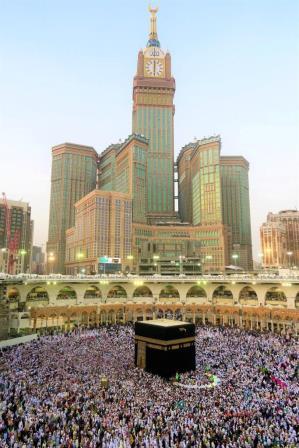Breaking
- MENU

Saudi Arabia has many achievements in the Middle East, including the region’s biggest economy and, simultaneously, the biggest polluter among the Gulf Cooperation Council (GCC) states. It is among the largest energy consumers in the region, with a per capita electric energy share of 8,841 kWh/person. About 99 percent of the country’s primary energy comes from non-renewables (62 percent from oil and 28 percent from natural gas). Increasing energy production through renewables is necessary to balance this dependency on exhaustible resources. It is one of the key focus areas under the Kingdom’s Vision 2030 programme that aims to increase the share of renewable energy sources to 50 percent.
The economy becomes inherently unstable when the country depends entirely on one sector. In the case of oil-rich countries, the energy sector dominates. Massive reserves of non-renewables come with an expiry date. Oil is an exhaustible resource; hence, looking for alternative energy sources is necessary to ensure economic stability before it ceases to exist. Macroeconomic stability dwindles as oil prices become volatile. The case of Venezuela can be seen as an example. The oil-rich nation dragged itself into hyperinflation and bankruptcy due to the gross mismanagement of its resources. To insulate their economies from the infamous oil curse, Gulf Arab countries are trying to diversify their economic portfolios.
The oil-abundant Saudi Arabia is located in the global Sun Belt region, a topographical area between 35 degrees north and 35 degrees south characterized by high solar radiation, making it convenient to harness abundant solar energy. Approximately 95 percent of Saudi Arabia is occupied by the biggest desert in the Arabian Peninsula, the Rub’ Al Khali or the Empty Quarter. The vast arid region is primarily inhabited and receives high solar radiation. The Kingdom is notable for its high global horizontal irradiance (GHI) of 2,200 kWh/m2 in the central region, where the weather is dry, and the humidity level is shallow. Large parts of its barren and desert landscape are sparsely populated, so there are tremendous opportunities to harness this solar irradiance and produce electricity.
The National Renewable Energy Programme (NREP) is a strategic initiative launched in 2017 as a part of Saudi Arabia’s Vision 2030. The Ministry of Energy, Industry and Mineral Resources (MEIM) supervise the programme. It aims to increase the share of renewables in the national energy mix used in electricity production and to curb the Kingdom’s greenhouse gas emissions. The target is to increase the share of renewable energy to approximately 50 percent by 2030 while reducing the use of liquid fuel.
The Renewable Energy Project Development Office (REPDO) under the MEIM is responsible for implementing the NREP in collaboration with the country’s major stakeholders in the energy sector. The programme is being rolled out in a phased manner through bidding and is done systematically to ensure that renewable energy is cost-competitive. Presently, bidding for four phases has been concluded, with the fourth phase projects floated on 25 September 2022 (Figure 1).
Figure: The Four Ongoing Phases of NREP
Source: National Renewable Energy Program eProcurement Portal, Saudi Arabia
First Phase (Request for Qualifications (RFQ) issued on 20 February 2017; Total capacity – 0.7 GW)
In the first phase, two projects were floated – the Sakaka Solar Power Project and the Dumat al-Jandal wind power project, with a production capacity of 300 MW and 400 MW, respectively. The solar PV project is situated in Sakaka, Al Jouf province and is sufficient to power more than 45,000 households. It has already been connected to the national grid. The project set a record-breaking lowest tariff cost in the solar PV sector, which amounted to 2.3417 cents per kilowatt hour (kWh). The wind power project is situated in Midyan, Tabuk Province. It received the Renewable Deal of the Year award from Project Finance International (PFI) for 2019 in the MENA region. It set a global record for the lowest tariff rate for onshore wind power at 1.99 cents per kilowatt hour (kWh).
Second Phase (RFQ issued on 1 August 2019; Total Capacity – 1.47 GW)
Under the second phase, the projects were bifurcated into two categories – Category A for smaller projects (production capacity of less than 100 MW) and Category B for larger projects (production capacity of greater than 100 MW). As noted in Table 1, two Category A and four Category B projects were initiated under this phase with a total production capacity of 1570 MW.
Table 1: Second Phase of Solar Power Project
|
Category A |
Production Capacity |
Category B |
Production Capacity |
|
Medina Project |
50 MW |
Al-Faisaliah Project |
600 MW |
|
Rafha Project |
20 MW |
Jeddah Project |
300 MW |
|
|
|
Rabigh Project |
300 MW |
|
|
|
Al-Qurayyat Project |
200 MW |
Source: Round Two Press Release
Third Phase (RFQ issued on 9 January 2020; Total capacity – 1.2 GW Solar PV)
In phase three (Table 2), four solar projects were initiated and divided into smaller and larger projects with a total production capacity of 1200 MG.
Table 2: Third Phase of Solar Power Project
|
Category A |
Production Capacity |
Category B |
Production Capacity |
|
Wadi Ad Dawasir |
120 MW |
AR Rass Project |
700 MW |
|
Layla Project |
80 MW |
Saad Project |
300 MW |
Source: Round Three Press Release
Fourth Phase (Launch date - 25 September 2022; Total capacity - 3300 MW)
Under phase four, Saudi Power Procurement Co. has launched five projects comprising three wind energy and two solar projects (Table 3).
Table 3: Fourth Phase of Solar Power Project
|
Solar Projects |
Production Capacity |
Wind Energy Projects |
Production Capacity |
|
Al Hinakiyah |
1100 MW |
Yanbu |
700 MW |
|
Tabarjal |
400 MW |
Al Ghat |
600 MW |
|
|
|
Waad Al Shamal |
500 MW |
Source: Saudi Press Agency
The total renewable energy production capacity combining the four phases is 6.67 GW. By 2024, the NREP projects aim to generate 15,108,701 MW of electricity annually and provide energy to 692,557 houses.
Saudi Arabia has immense solar power generation capacity. However, producing electricity is only part of the story. Due consideration needs to be given if it can be stored and transmitted. A recent study by Muhammad Zubair and Ahmed Bilal Awan states that it is economically feasible for MENA countries to export photovoltaic solar energy of 8 GW to Europe and South Asia through a high voltage direct current (HVDC) multi-terminal transmission line. Out of all the explored routes, the most viable one is from Riyadh to Greece via Iran, Iraq and Kuwait. Along with reducing the ecological footprint of the solar importing countries, exporting solar energy will increase Saudi Arabia’s renewable footprint in the neighbouring nations replacing its liquid fuel dependence and paving the way for a sustainable future.
Saudi Arabia and India share strong bilateral ties, with the Kingdom being India’s fourth largest trade partner, valued at US$42.8 billion in 2021-22. Saudi Arabia significantly impacts India’s energy sector, meeting around 18 percent of its crude oil requirement and about 22 percent of its LPG requirement. Cross-country investments have spiked in recent years as well. Given India’s commitment to the Paris Climate Agreement and pledge to become carbon neutral by 2070, renewable energy is a potential avenue for future investments. India launching the International Solar Alliance (ISA) only indicates its dedication to deploying solar energy solutions. The surge of a new wave of energy diplomacy has been witnessed with the discussions of deep-sea cables connecting the Gujarat coast and the Middle East through a green grid. With Saudi Arabia looking to expand its energy mix and the growth rate of the population and economy of India pointing towards a future rise in energy needs, there are immense possibilities for collaboration in renewable sources, including solar and wind energy projects.
As part of its editorial policy, the MEI@ND standardizes spelling and date formats to make the text uniformly accessible and stylistically consistent. The views expressed here are those of the author and do not necessarily reflect the views/positions of the MEI@ND. Editor, MEI@ND: P R Kumaraswamy

Abhilipsa Jena is pursuing her Masters at the Department of Politics and International Relations, Pondicherry University, India. Her interest area focuses on the political economy of East Asia, energy politics in West Asia, and India's energy interests in the region. Email: abhilipsajena923@gmail.com
